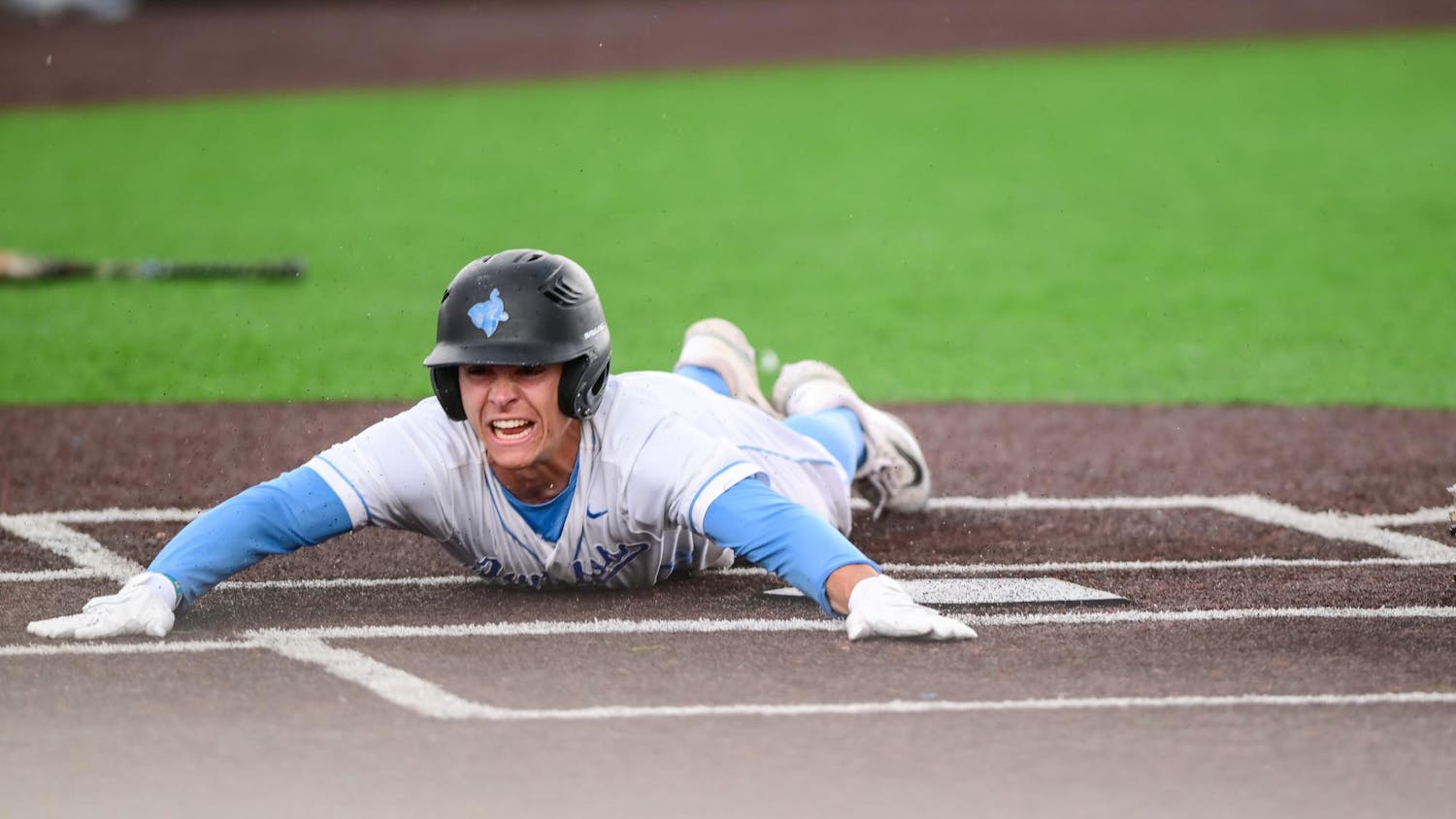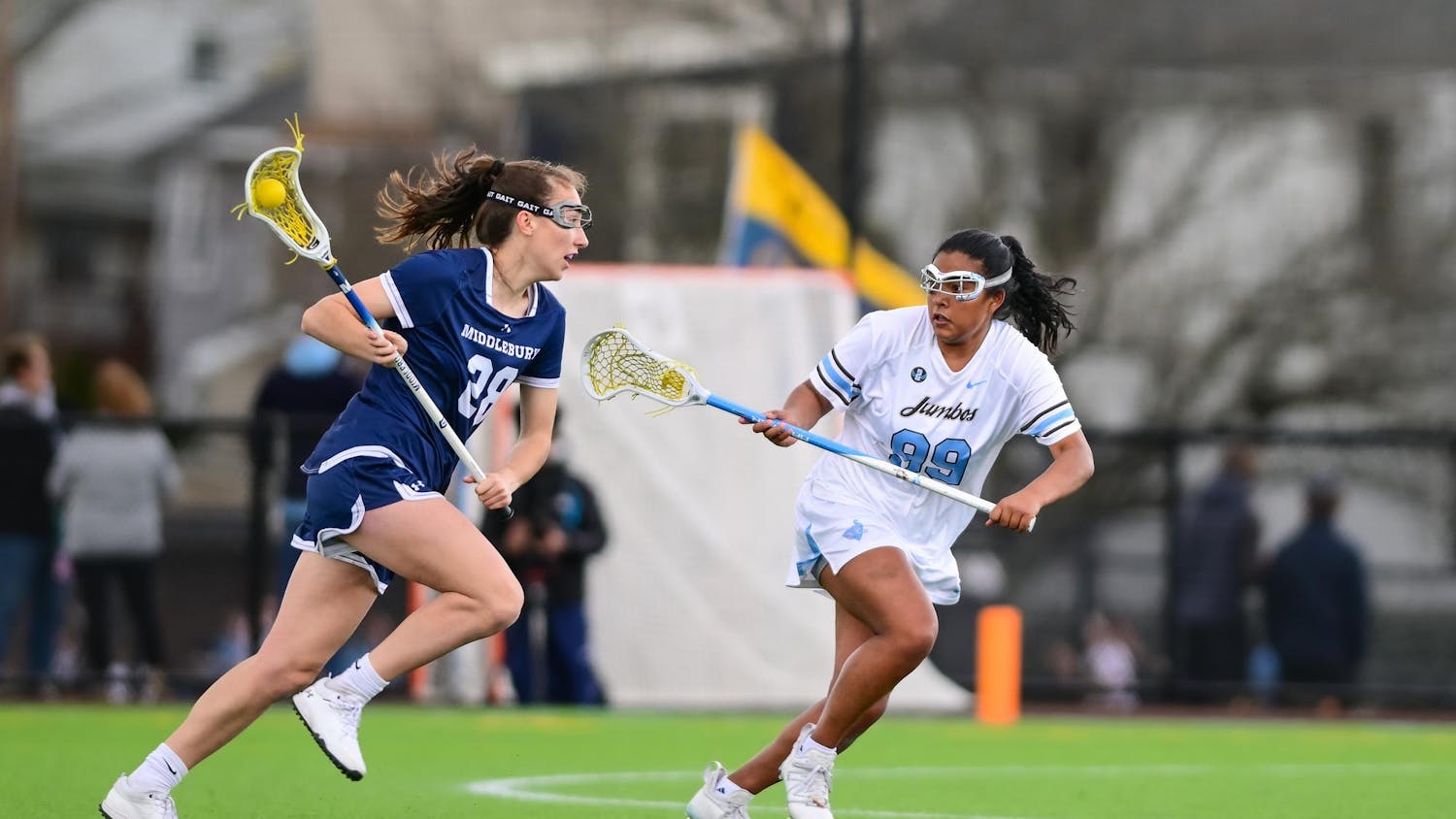Taking to the water for its first race of the season, the women's crew knew it wanted to make a statement against local out-of-conference foe Wellesley, a squad that had outperformed the Jumbos just last fall at the Head of the Charles.
What Tufts did on the Malden River on Saturday was less of a statement and more of an exclamation, sweeping the Blue in all five head-to-head races and handily dominating the visitors from nearby Wellesley in four of those matchups.
"We were psyched," senior co-captain Kaitlyn Mula said. "It was the first race, and at the first race you're always really excited and a little overly anxious, and it's always kind of that deal where, ‘Can you apply everything you learned in practice to the real deal?' And I feel like we really did a good job of doing that."
Rowing under virtually perfect conditions, the varsity eight defeated Wellesley by a comfortable 9.5-second margin, 6:53.48 to the Blue's 7:03.00 showing. Indeed, the Tufts second varsity eight, which cruised to an 11-second victory over its counterpart, ended up clocking in at 7:03.89, less than a second behind the time of Wellesley's first varsity eight.
Competition between the third varsity eights marked the closest race of the day as the Jumbos started out with a modest lead, though the crew from Wellesley refused to surrender, challenging Tufts all the way to the finish line. Tufts held on to win that race by less than a half second, crossing the line at 7:13.29 ahead of the visitors' 7:13.74 effort.
"I think the most exciting part was that even though the third varsity had a really close race at the end, they were out fast at the starting line, and that's something that's always been a challenge in the past, just being really explosive and aggressive within the first [500 meters] and getting a big lead on the other team," senior co-captain Steph St. Thomas said. "And it was really exciting to see it all in five boats [that] we were able to accomplish that. So it's definitely a good way to start the season and to start preparing for what else we need to work on."
Despite the gaudiness of the numbers behind their successes — Tufts' all-freshman novice eight and second novice combination eight also cruised to victory by 25.48-second and 37.38-second margins, respectively — the Jumbos maintain that there is still room for improvement. It's worth noting that when Tufts and Wellesley squared off to launch the spring season last year, the Tufts varsity eight finished in 7:15.70, over 20 seconds slower than the boat's Saturday time.
"It was wasn't our very best row, but I feel like it was a great place to start and it really brought together the girls, who after working for months and months without seeing the light at the end of the tunnel, realized, ‘Wow, I'm way stronger now, I'm rowing faster,' so it was really great," Mula said. "It's great to win by such a huge margin, but then you have to think in the picture that, come New Englands, is Wellesley our biggest competitor? No. Do we still have work to do? Yes. And I feel like it's a motivator and a really good way of planning out the next month."
"I think especially having that sort of success and saying that wasn't our best row is a really positive thing because we know that we can improve so much on that and be even faster and more explosive," St. Thomas added.
While acknowledging last week that Wellesley usually proves a competitive opponent — during the first race of the spring last year against the Blue at home, the Tufts varsity and second varsity eights both won, though by much narrower margins than Saturday, while the third varsity and novice eights both lost — the crew did not know what the lineup would look like until after Friday's final seat-racing to determine placement. In the end, the varsity eight represented diversity among the classes with three seniors, four sophomores and two freshmen, including the coxswain, but was composed somewhat differently compared to the projected boat roster from earlier last week.
"[Coach Gary Caldwell] made it perfectly clear that people are going to change around not based on erg scores, not based on history in the boat, and sometimes I feel like the whole is greater than the sum of its parts in a given boat," Mula said. "Even though we do have rowers with superior erg scores to others, sometimes different combinations fit differently in different boats, and basically that's the end of it. We still have a lot of work to do; these boatings are not set, they are probably never going to be set, and people are going to be switching around day after day."
"I think given our time constraint for the week, it was the fastest boat that we could have put out this weekend, but we definitely left the week knowing that there's still a lot of unanswered questions in terms of how to make it faster," St. Thomas added.
Tufts will continue to sort out and determine the composition of its boats this week — St. Thomas, a key member for the varsity boat, will return after having missed Saturday's race due to injury — for races on the Malden this weekend when it takes on Mt. Holyoke and Vermont on Saturday, followed by Tulane on Sunday. And while the crew looks to maintain the same aggression at the start that it did against the Blue on Saturday to build early leads, there is an understanding that against tighter opposition, the final burst toward the finish will be vital.
"[One thing about] having such a big lead on Wellesley in at least both the varsity and the [second varsity] is that it didn't give us as much an opportunity to work on our sprint … That's probably not something that's going to happen again," St. Thomas said. "And Mt. Holyoke is always a really competitive team with us and we see them again at New Englands and ECACs, so it's good to have that practice and will be a good thing for us to focus on in terms of if we can be explosive at the start and explosive in the middle to really finish it off with a sprint at the end.
"Last spring we came back from many races that we were down in with our sprint, and so it's a lot more comfortable to set the lead at the beginning, and I think it's something that a lot of girls that were in the varsity last year aren't used to," she added.
More from The Tufts Daily





